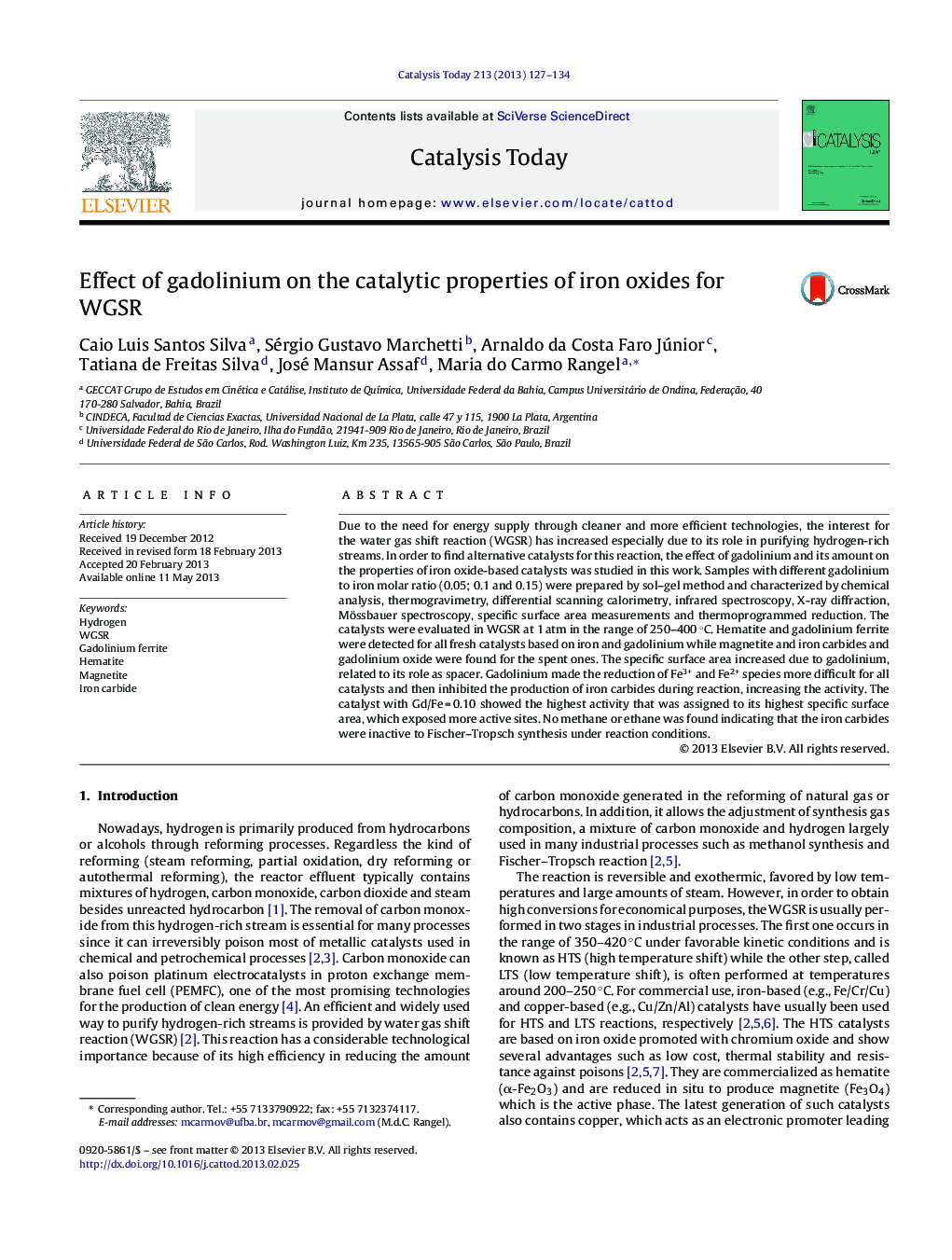| Article ID | Journal | Published Year | Pages | File Type |
|---|---|---|---|---|
| 54784 | Catalysis Today | 2013 | 8 Pages |
•Gd increases the specific surface area of hematite and magnetite.•Gd delays the iron carbides production during WGSR.•Gd increases the activity of iron oxide-based catalysts.
Due to the need for energy supply through cleaner and more efficient technologies, the interest for the water gas shift reaction (WGSR) has increased especially due to its role in purifying hydrogen-rich streams. In order to find alternative catalysts for this reaction, the effect of gadolinium and its amount on the properties of iron oxide-based catalysts was studied in this work. Samples with different gadolinium to iron molar ratio (0.05; 0.1 and 0.15) were prepared by sol–gel method and characterized by chemical analysis, thermogravimetry, differential scanning calorimetry, infrared spectroscopy, X-ray diffraction, Mössbauer spectroscopy, specific surface area measurements and thermoprogrammed reduction. The catalysts were evaluated in WGSR at 1 atm in the range of 250–400 °C. Hematite and gadolinium ferrite were detected for all fresh catalysts based on iron and gadolinium while magnetite and iron carbides and gadolinium oxide were found for the spent ones. The specific surface area increased due to gadolinium, related to its role as spacer. Gadolinium made the reduction of Fe3+ and Fe2+ species more difficult for all catalysts and then inhibited the production of iron carbides during reaction, increasing the activity. The catalyst with Gd/Fe = 0.10 showed the highest activity that was assigned to its highest specific surface area, which exposed more active sites. No methane or ethane was found indicating that the iron carbides were inactive to Fischer–Tropsch synthesis under reaction conditions.
Graphical abstractFigure optionsDownload full-size imageDownload high-quality image (202 K)Download as PowerPoint slide
